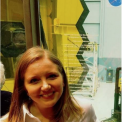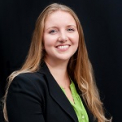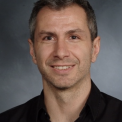Events Calendar View
-
CSP Lunch Seminar
Sep 28, 2021
Quantum Algorithm for Wang-Landau Sampling - Part II
-
Departmental Colloquium
Sep 30, 2021
Chronicles of the Unknown: Webb Science across the Universe into the Solar System
In late 2021, scientific innovation will take the next step into space exploration and journey. The James Webb Space Telescope (sometimes called JWST or Webb), an orbiting infrared observatory that will complement and extend the discoveries of the Hubble Space Telescope but with longer wavelength coverage and greatly improved sensitivity, will launch into space on an Ariane 5 rocket from French Guiana. Webb will be the premier observatory of the next decade, serving thousands of astronomers and planetary scientist worldwide. It will study every phase in the history of our Universe, ranging from the first luminous glows after the Big Bang, to the formation of solar systems capable of supporting life on planets like Earth, to the evolution of our own Solar System. The discovery space for small bodies in the Solar System with Webb is unprecedented and will reveal new insights to planetesimal formation, composition, and distribution. Physically characterizing planetesimals throughout the solar system is often challenging via remote observations because of their combination of dark surfaces, extreme distances, and some diagnostic spectral features only distinguishable beyond Earth’s atmosphere. JWST's discoveries for these small bodies are expected to reveal the presence of previously unseen molecular gases and ices, constrain their physical state (e.g., crystalline phase and grain-size), and measure isotopic ratios of volatile elements (H, O, C, N). Additionally, imaging at longer wavelengths can be used to study temperature variations on larger bodies (Parker et al. 2016). In this talk, I will provide a status update of the Webb Telescope, briefly review the main science themes for JWST, and conclude with anticipated science from JWST's exploration of the objects in our Solar System, namely small bodies.
-
Special Colloquium
Oct 1, 2021
Millimeter/submillimeter spectroscopic detection of desorbed ices
-
CSP Lunch Seminar
Oct 5, 2021
3D Radiative transfer & Phoenix/3D
-
CSP Lunch Seminar
Oct 12, 2021
Simulation of quantum many-body systems with tensor networks
-
Departmental Colloquium
Oct 14, 2021
Breaking Speed and Resolution Limitations of AFM
High-speed atomic force microscopy (HS-AFM) is a powerful technique that provides dynamic movies of biomolecules at work. We successfully used HS-AFM to take movies – and determine dynamic parameters – of membrane trafficking systems such as ESCRT-III and clathrin, transporters and channels.
To break current temporal limitations to characterize molecular dynamics using HS-AFM, we developed HS-AFM height spectroscopy (HS-AFM-HS), a technique whereby we oscillate the HS-AFM tip at a fixed position and detect the motions of the molecules under the tip. This gives sub- nanometer spatial resolution combined with microseconds temporal resolution of molecular fluctuations. HS-AFM-HS can be used in conjunction with HS-AFM imaging modes, thus giving access to a wide dynamic range.
To break current resolution limitations, we developed Localization AFM (LAFM). By applying localization image reconstruction algorithms to peak positions in high-speed AFM and conventional AFM data, we increase the resolution beyond the limits set by the tip radius and reach quasi-atomic resolution on soft protein surfaces in native and dynamic conditions. The LAFM method allows the calculation of high-resolution maps from either images of many molecules or many images of a single molecule acquired over time, opening new avenues for single molecule structural analysis.
Page 111 of 121, showing 6 records out of 723 total, starting on record 661, ending on 666




